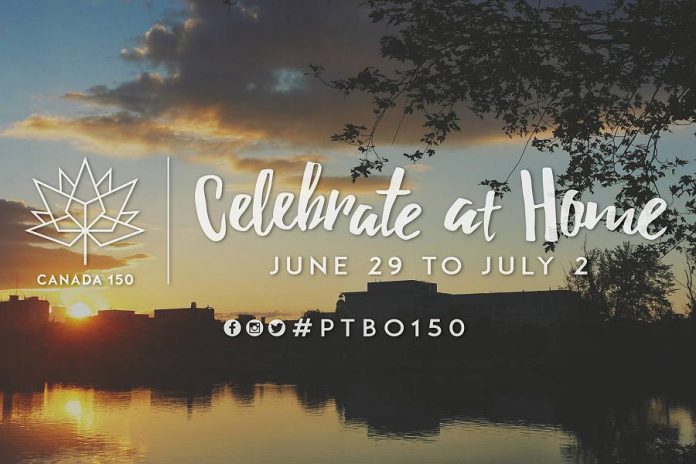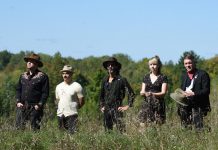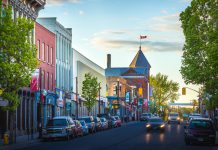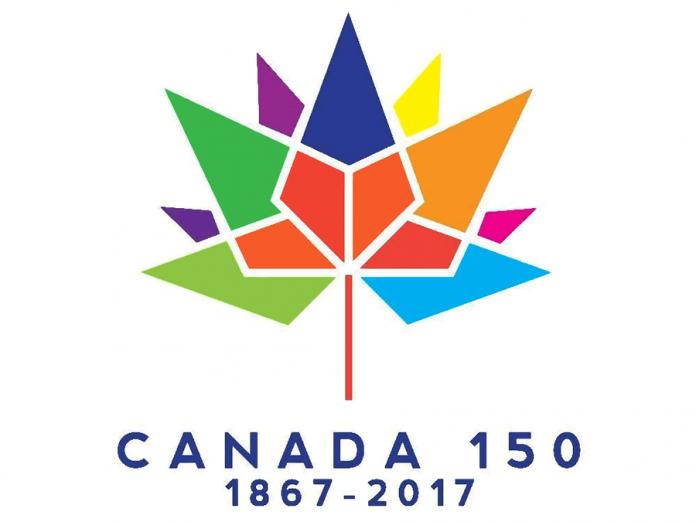
Happy New Year … and Happy Sesquicentennial!
2017 is the year we celebrate the 150th anniversary of the Confederation of Canada as a country. Lots of special events and celebrations are being planned around Canada’s 150th birthday on July 1st, including “Celebrate At Home” in Peterborough and The Kawarthas (with Kim Mitchell performing at Peterborough Musicfest on Canada Day).
Although we are marking Canada’s 150th birthday this year, the history of Canada as a nation goes back much further than 1867. In case you’ve forgotten what you learned about Canada’s past in elementary school, here’s a brief history of what happened before Confederation.
The very first inhabitants of Canada — whose descendants are today’s First Nations, Inuit, and Métis peoples — crossed the Bering land bridge from Siberia to Yukon (known as “Beringia”) at least 15,000 years ago. Aboriginal cultures thrived here for many thousands of years, with indigenous populations in North America reaching as high as two million people by some estimates.
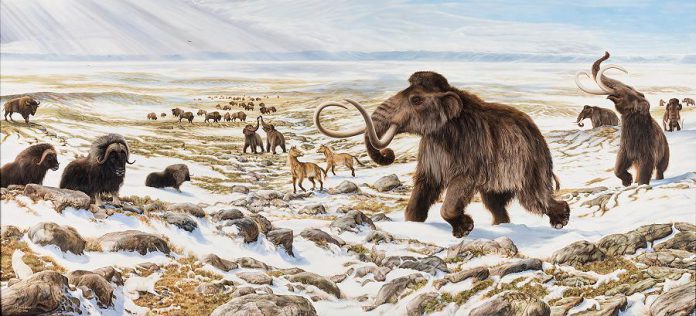
The first known attempt at European colonization began when Norsemen settled for a short time in what is now Newfoundland around 1000 AD. In 1497, Italian explorer John Cabot claimed Canada’s Atlantic coast in the name of King Henry VII of England. About a hundred years later, Basque and Portuguese mariners established seasonal whaling and fishing outposts along the Atlantic coast.
The earliest permanent European settlers in Canada were the French and English. In 1534, French explorer Jacques Cartier explored the Saint Lawrence River where he claimed possession of the territory in the name of King Francis I. This is also the origin of Canada’s name. In 1535, indigenous inhabitants of the present-day Quebec City region used the word “kanata” — an Iroquoian word meaning “village” or “settlement” — to direct Cartier to the village of Stadacona. Cartier later mispronounced this word as “canada” and used it to refer to the entire region.
VIDEO: Heritage Minutes: Jacques Cartier
In 1603, French explorer Samuel de Champlain sailed up the St Lawrence River and founded Port Royal in Acadia (now Nova Scotia) in 1604 and Quebec in 1608. The French then founded Montreal in 1642, and the French colony in Canada became known as New France, with a total population of around 10,000 by the end of the 17th century.
Around this time, French missionaries such as the Jesuits tried to convert (mostly unsuccessfully) the indigenous peoples of Canada to Christianity, while French settlers traded with them for furs and farmed the land. While the European settlers had a mainly peaceful relationship with aboriginal Canadians, they unfortunately exposed them to infectious diseases like measles, smallpox, and influenza. Indigenous peoples had no natural immunity to these diseases and, as a result, their populations were decimated by as much as 80 percent.
In 1583, England founded St. John’s, Newfoundland, as the first North American English colony. In 1610, Henry Hudson discovered Hudson Bay and Thomas James discovered James Bay in 1631. In 1629, the English captured Quebec, but returned it to France in 1632. In 1670, the English founded the Hudson Bay Company, which had exclusive rights to trade skins and firs with the inhabitants of the Hudson Bay area.
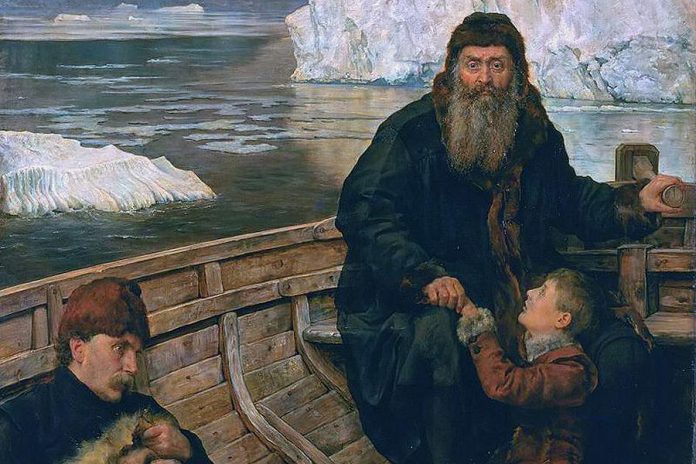
During the 18th century, England and France fought for control of Canada. After the War of the Spanish Succession in the early 1700s, France was forced to recognize British control of Hudson Bay and Newfoundland and to cede Nova Scotia to Britain.
During the Seven Years War (1756-1763), the British captured the French fortress of Louisbourg on Cape Breton Island in 1758, the city of Quebec in 1759, and Montreal in 1760. In 1763, the French were forced to surrender all their territories in Canada to Britain by the Treaty of Paris. However, Britain subsequently allowed French Canadians to practice their own religion and to practice French civil law alongside British criminal law.
In 1775, at the beginning of the American Revolution, an American army captured Montreal but failed to capture Quebec, and the American soldiers retreated in 1776. After the American Revolution, around 40,000 Americans who remained loyal to Britain migrated to Canada. (Later, during the war of 1812, the Americans again tried to invade Canada but they were repulsed).
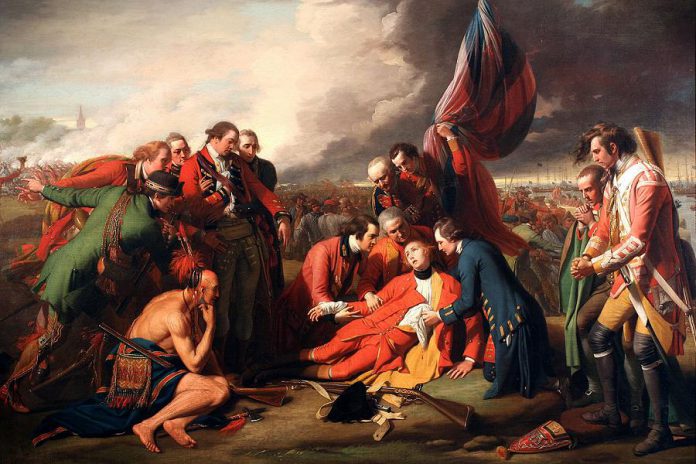
In 1791, the British parliament passed legislation which divided the Lawrence River Valley into Upper Canada (mainly English) and Lower Canada (mainly French), each with an elected legislature but led by a British-appointed council with executive powers. By the early 19th century, some reformers, inspired by the success of the American Revolution, sought a more democratic form of government. In Lower Canada, Louis Joseph Papineau led an unsuccessful uprising of French Canadians from 1837 and 1838. In Upper Canada, William Lyon Mackenzie (the first mayor of Toronto) led an unsuccessful uprising in 1837 which resulted to his death.
After the two rebellions were supressed, the British government appointed Lord Durham as governor general of British North America and sent him to investigate the causes of the uprisings. Reformers introduced him to the concept of “responsible government,” which would give legislative power to elected assemblies. Durham recommended a form of responsible government to the British government, but his recommendation was rebuffed.
After Upper and Lower Canada were united as the new Province of Canada, reformers in the legislature introduced the Rebellion Losses Bill to provide compensation to French Canadians who had suffered losses during Lower Canada rebellion. The controversial legislation essentially codified the idea of responsible government, and Governor General Lord Elgin signed the bill into law in 1849 with the support of the British government — paving the way for Confederation.
VIDEO: Heritage Minutes: Responsible Government
On July 1, 1867, the first British North America Act was passed (there were 19 subsequent British North America Acts from 1871 to 1975), which officially proclaimed the Confederation of Canada, with Canada as the legal name for the new country. Initially, the confederation only included four provinces: Ontario, Quebec, Nova Scotia, and New Brunswick.
In 1870, Canada formed the Northwest Territories, which joined the confederation, as did the newly created province of Manitoba (which followed an armed uprising of the Métis people against the Government of Canada, a conflict known as the Red River Rebellion). The Yukon Territory (now known as Yukon) was split from the Northwest Territories in 1898 and joined the confederation. British Columbia joined the confederation in 1871, Prince Edward Island in 1873, Alberta and Saskatchewan in 1905, and Newfoundland joined in 1949. Canada’s newest and largest territory, Nunavut, joined the confederation after it was officially separated from the Northwest Territories in 1999.
One could argue that Canada only became a fully independent country in 1931, when the Statute of Westminster granted Canada the right to be an independent nation, and with the Canada Act in 1982, which finally severed Canada’s last remaining ties with the British parliament (before that act was passed, some amendments to Canada’s constitution had to be approved by the British government). While Canada is now governed completely independently, Queen Elizabeth II is still Head of State and Queen of Canada.
For more information on Canada’s 150th celebrations, visit canada.ca/150. For more information about Peterborough’s celebrations, visit www.facebook.com/PTBO150 and follow along on Twitter at @Ptbo150.
